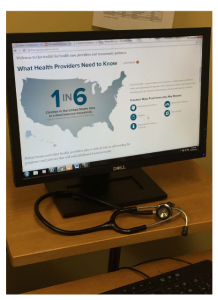 SNAP and Health – Intricately Intertwined
SNAP and Health – Intricately Intertwined
Over the past week, we’ve spent some time reading the December 2017 report from the Food Research and Action Center, Hunger & Health: The Impact of Poverty, Food Insecurity and Poor Nutrition on Health & Wellbeing. The findings are eye-opening – or, more to the point, they confirm what most people who have been involved in food action have known for years. In a nutshell, poverty, food insecurity and poor nutrition are underlying factors in many of the most common chronic diseases. When those factors are ameliorated – for example, by providing SNAP access to vulnerable populations – people are healthier, which reduces the cost of health care across the board. In other words, there is a very definite tie between increasing access to SNAP and health improvement.
Poverty and food insecurity are social determinants of health, and are associated with some of the most serious and costly health problems in the nation.
Five Facts About Poverty and Health
- People living in or near poverty levels have worse health outcomes and less access to health care.
- Poor neighborhoods have fewer supports for better health and nutrition: fewer full-service groceries, fewer parks, and fewer recreational facilities overall.
- People living in poor neighborhoods are exposed to more environmental hazards (poor air and water quality, poor housing quality) than those in higher income neighborhoods.
- Childhood poverty carries implications that affect adult health outcomes.
- Adults living in poverty are at higher risk of diabetes, heart disease, stroke, obesity, poor oral health, and premature mortality.
One of the most striking charts in the report lists health problems that are associated with poverty and food insecurity. It’s a veritable laundry list of the most costly and life-affecting illnesses and health conditions that we deal with as a society. Children who live in households that struggle with food access are more likely to also face:
- asthma
- behavioral problems (hyperactivity, etc)
- birth defects
- iron deficiency anemia
- developmental risk
- low birth weight
- lower bone density in boys
- lower health quality
- lower academic scores and outcomes
- more frequent colds and stomach aches
- poorer dental health
Adults who live in food insecure households are also more likely to deal with:
- arthritis
- asthma
- congestive heart failure
- cancer
- depression
- diabetes
- chronic kidney disease
- COPD
- tobacco use
- hyperlipidemia
- generalized inflammation
- physical limitations
- pregnancy complications
- obesity
- peripheral artery disease
- stroke
- suicidal ideation
- osteoporosis
Understanding how poverty affects nutrition is the first step to understanding the linkages between SNAP and health. Research has shown that people with reduced access to healthy, nutritious and affordable foods resort to coping strategies that include skipping meals, choosing lower cost but less nutritious foods, stretching their medication to “make it last” so that they can buy food, and making choices between food, housing and medical needs. They may find it more difficult to stick to medically dictated diets – such as healthy diets for people with diabetes – because the foods are more expensive. These strategies help fill bellies and reduce hunger pangs, but often lead to serious health problems. That, in turn, leads to higher health care costs, not just for the families involved but for the health care system overall.
These are important considerations for all of our legislators as they go about determining budgets and program allocations going forward. The links between SNAP and health care costs, health outcomes and healthier people are clear. We need to make sure that our elected officials recognize them, and prioritize their budgets accordingly.



